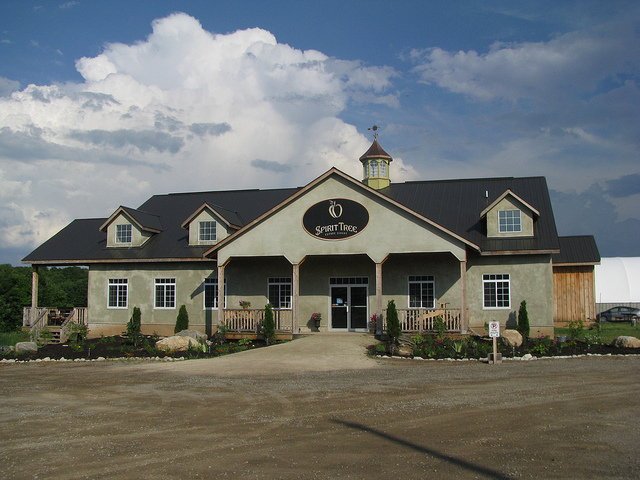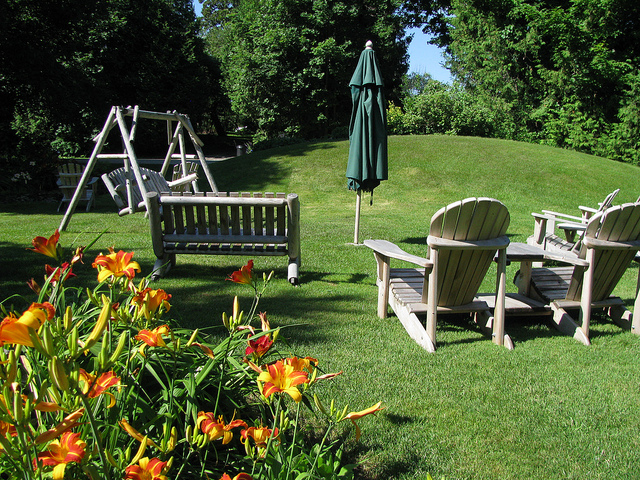Coming around now to the north side of the mill, we had a look at the Annex, a former wool storage warehouse that has been turned into a 4000 square foot open-air display space. The roof of the warehouse had deteriorated so much that it had to be removed. One year ago the stone walls were restored and protected with a cap against the elements and this space is not only used for arts exhibitions now, but also for special events and theatre performances. A live outdoor theatre performance of the Taming of the Shrew by the Humber River Shakespeare Company was scheduled for this week.

The open-air Annex building
The Annex is used for a wide variety of purposes; in the winter it holds a firepit, in the summer it is used for roasting hot dogs and marshmallows. Inukshuks were on display to entertain and engage visitors with their infinite ability to change; people can get involved and the spontanteous built stone sculptures have proven to be a popular toy box for adults. All the art on the property changes regularly and keeps the audience engaged.

Beautiful summer flowers adorn the property of the Alton Mill
In and around the Annex we admired a variety of sculptures, many of which were created by Roy Hickling, a farmer who creates metal sculptures, often working with found objects. A canoe shaped bench by artist Doug Bell adorns the north side of the building and a scarecrow by Yael Ehrlichman makes a statement by the Annex. Jeremy also pointed out the water tower on the mill building which holds a 5000 gallon wooden water tank that fortunately has never had to be used. The tower is now the main entry point into the Alton Mill, and when it is lit up at night it creates a spectacular visual effect.

The north side of the Alton Mill, with the mill’s tower
We now headed back inside the mill, where Jeremy introduced me to Peter Van Ryn who runs the Shaw’s Creek Café. An offshoot of the “With the Grain” bakery in Guelph, this café serves fresh, organic lunches and homemade baked goods. I sat down for a hearty and healthy minestrone, an organic salad and maple orange pecan granola. The adjoining gift shop sells locally made items with a garden and kitchen theme.

A very colourful and healthy lunch
After lunch, Jeremy and I went downstairs to the Turbine Heritage Room Exhibit. This small museum displays original equipment and technologies that used to power the mill. It houses many interesting artifacts, for example, a penny that was found in the dirt and picked up by a construction worker was made into a necklace. The antique coil boiler shows the original heating system of the mill. Historical images illustrate how the Alton Mill looked in 1898 and then 7 years later in 1905.

Some of the antique machinery on display in the Turbine Heritage Room Exhibit
The outlet pipe and the main power takeoff shaft of the mill are still visible. A so-called “governor”, made in 1896 in Illinois, operated the gates to regulate the amount of water flow for the mill. Engineering drawings from 1910 are also on display and were used to solve some construction-related problems during the renovation phase. An ancient looking electrical panel by the Windeler Electric Company can be viewed as well. Any mechanically inclined visitor will have a great time in the Turbine Heritage Room Exhibit. Best of all, it’s free to visit.

The Turbine Heritage Room Exhibit




